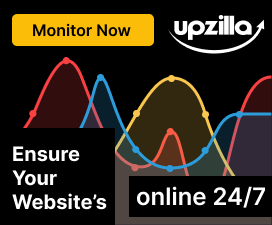Removing bad links is an important aspect of search engine optimization (SEO) as it helps to improve the credibility of your website in the eyes of search engines. When search engines like Google analyze the links pointing to your site, they consider the quality and relevance of those links. If they find a lot of low-quality or spammy links, it can negatively impact your search engine rankings.
To identify bad links, you can use a tool like Google Search Console or a third-party link analysis tool. These tools can help you identify links that are coming from low-quality or spammy websites. Once you have identified these links, you can take steps to remove them.
Here's a step-by-step guide on how to identify bad links using Google Search Console:
- Log in to your Google Search Console account.
- Click on your website property in the dashboard.
- In the left-hand sidebar, click on "Links" and then "External links".
- You will see a list of websites that are linking to your website.
- Sort the list by clicking on the column headers. You can sort by "Linked Pages" to see which pages on your website are receiving the most links, or you can sort by "Domains" to see which websites are linking to your site.
- Review the list of websites and look for any that appear to be low-quality or spammy. Some signs of low-quality or spammy websites include:
- Lots of outbound links to unrelated or low-quality websites
- Poor design or user experience
- Unrelated or low-quality content
- A history of being penalized by Google
- Click on a linked page to see more details about the linking website. This will show you information such as the domain authority, page authority, and the number of links to the website.
- Review the details and decide if the link is good or bad. If you believe it is bad, take steps to remove it.
To remove a bad link, you can take the following steps:
- Contact the website owner or webmaster and ask them to remove the link. You can usually find their contact information on their website. Be polite and explain why you want the link removed.
- Follow up with the website owner if you don't hear back within a week or two.
- If the website owner doesn't respond or refuses to remove the link, you can use Google's disavow tool. This tool allows you to tell Google to ignore the link when analyzing your website's backlink profile.
- To use the disavow tool, create a text file that lists the URLs of the bad links you want to disavow. Upload this file to Google Search Console.
Remember that removing bad links is an ongoing process. It's important to regularly review your website's backlink profile and take action to remove any bad links you find. This will help to improve your website's search engine rankings and overall credibility.
The first step in removing bad links is to reach out to the website owner and request that they remove the link. You can usually find the website owner's contact information on their website. If you can't find their contact information, you can use a WHOIS lookup tool to find their email address.
If the website owner doesn't respond to your request or refuses to remove the link, you can use the Google Disavow tool. This tool allows you to tell Google which links you don't want them to consider when analyzing your site's backlink profile.
To use the Disavow tool, you'll need to create a text file that lists all of the links you want to disavow. You'll then upload this file to Google Search Console. It's important to note that you should only use the Disavow tool as a last resort. You should always try to remove bad links manually first.
In addition to removing bad links, it's also important to focus on building high-quality, relevant links to your site. This can help to improve your search engine rankings and offset any negative impact that bad links may have had.
To build high-quality links, you can focus on creating valuable content that other websites will want to link to. You can also reach out to other websites in your niche and offer to contribute guest posts or other content in exchange for a link back to your site.
In conclusion, removing bad links is an important aspect of SEO that can help to improve your search engine rankings. By using tools like Google Search Console and the Disavow tool, you can identify and remove low-quality or spammy links pointing to your site. Additionally, focusing on building high-quality, relevant links can help to offset any negative impact that bad links may have had.









